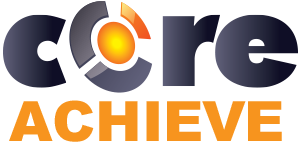Unlocking Employee Potential: The Transformative Benefits of an Interactive Learning Management System (LMS)
January, 04 2024
Other posts:
Enhancing Team Dynamics for Effective Group Decision-Making with LMS Integration
Organizations increasingly rely on collaborative efforts to solve complex problems, innovate, and adapt to change, but how do we ensure that collaboration is happening.
Maximizing Small Business Potential with Training Technology
Training technologies can push small businesses ahead of their competitors, but what are the factors that go into choosing the right technology?
Building a Robust Sales Pipeline with Training
Every organization wants a streamlined sales pipeline, but building one requires a series of interlocking activities with one of the most important being training.
Strategies for Adapting In-Person Training to Online Platforms
Online training is one of the most flexible ways of delivering training across organizations, but how do you even begin to adapt in-person training into online?
Giving Back to Employees: Strategies for Impactful, Organizational Gifts
Gifts don't have to be purely material, organizations can give back to their people by implementing some structural changes.
Interactive training allows for unlocking employee potential, but how is it done?
Learning Management Systems (LMS) have become standard training tool across organizations and industries, however, just using the standard doesn’t mean getting all the benefits. An LMS, and its courses, can be designed to be interactive to maximize the engagement of users. Unlike traditional training methods, an Interactive LMS offers a dynamic and engaging platform that not only simplifies the training process but also brings a myriad of benefits to both employees and organizations.
1. Engaging Learning Experience
An Interactive LMS transforms mundane training sessions into interactive and engaging experiences. By incorporating multimedia elements, gamification, and simulations, employees are more likely to stay focused and absorb information. The use of videos, quizzes, and interactive scenarios leads to better retention of knowledge.
2. Personalized Learning Paths
Not every employee learns at the same pace or has the same learning style. An Interactive LMS allows organizations to create personalized learning paths tailored to individual needs and job roles. Employees receiving individualized training not only makes the training more effective, but more engaging as all the information directly pertains to them.
3. Real-time Feedback and Assessment
Interactive LMS platforms enable real-time assessment and feedback, providing employees with immediate insights into their progress. This facilitates a continuous improvement mindset, allowing individuals to identify areas for growth and development. Quick feedback loops empower employees to make adjustments and master concepts efficiently.
4. Boosted Engagement through Gamification
Gamification elements, such as badges, leaderboards, and rewards, inject an element of competition and achievement into the training process. Employees are motivated to complete modules and challenges, fostering a positive, continuously learning culture. This gamified approach increases the interactivity of the platform, even if users are still just taking courses.
5. Flexibility and Accessibility
Interactive LMS platforms offer the flexibility of training anytime, anywhere. With mobile-friendly interfaces, employees can access training materials on their smartphones or tablets, accommodating diverse learning preferences and busy schedules. This accessibility is especially valuable for remote or globally dispersed teams.
6. Improved Information Retention
Studies have shown that interactive learning methods significantly enhance information retention compared to traditional approaches. Interactive elements, such as simulations and hands-on exercises, enable employees to apply theoretical knowledge in practical scenarios. This active participation leads to a deeper understanding and long-term retention of skills.
7. Cost-Efficiency
Investing in an Interactive LMS can lead to long-term cost savings for organizations. Traditional training methods often involve expenses related to travel, printed materials, and venue rentals. With an LMS, these costs are significantly reduced as training materials are digitized, and employees can access them remotely, eliminating the need for physical infrastructure.
8. Data-Driven Decision Making
Interactive LMS platforms come equipped with robust analytics capabilities. Organizations can gather valuable data on employee progress, engagement levels, and performance. This data-driven approach allows HR and training professionals to make informed decisions, identify areas of improvement, and tailor future training programs to address specific needs.
Interactivity is critical to the engagement and effectiveness of a learning platform, while interactivity might seem daunting, platforms can be made interactive from systems like gamification. The benefits extend beyond traditional training methods, fostering a culture of continuous learning, engagement, and skill development. As technology continues to shape the future of work, embracing interactive learning solutions is a key step towards building a dynamic and resilient workforce.
Get started with CoreAchieve today for free.
Photo by Katya Ross on Unsplash

Leave comment: